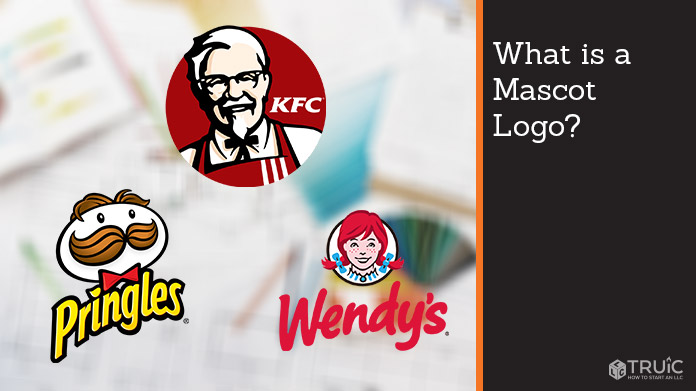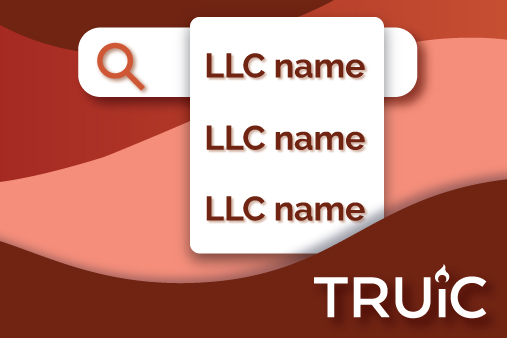What is a Mascot Logo?
Tony the Tiger, the Kool-Aid Man, Wendy, Mr. Clean: some brands use memorable mascots so that their audience has a (usually) friendly face to associate with the company. We’ll look at how brands came to use mascots, when they work, and whether it’s right for you.

The Mascot Logo
A mascot logo is one that bears an image of an identifiable brand ambassador, often in the form of a cartoon. Mascot logos are designed to be relatable, giving an audience an easy way to connect with and understand the company.
Mascots are most strongly associated with sports, which is where the mascot got its start. Sports organizations wanted to use animals as a way to connote their players’ power to grace. Officials also wanted to stimulate excitement in the crowd.
One of the oldest mascots for a company is The Michelin Man. This character was first drawn in 1898 but not of the jolly figure that you’re used to today. In fact, the original iteration was described as sinister! Mascots have come a long way since then.
Types of Mascot Characters
There are several types of characters up for grabs with mascot logos. You might choose to make your mascot a cartoon version of a real person (e.g., the company founder). Or you might choose an animal or an inanimate object. Some people create abstract characters and assign mythical stories to them, while others will go with something more straightforward.
For example, the Pillsbury Doughboy is a representation of their product in person form. The image is used prominently on both products and commercials. Another example is Juan Valdez, the mascot for the National Federation of Coffee Growers of Colombia. He’s a real coffee farmer and serves as the spokesman for the brand. His name might not be quite as well-known as the Doughboy, but you would likely recognize his drawing. It’s sketched in dark gradients and accompanied by a pack mule and mountain on his federation’s logo.
Most brands will choose some sort of personality, either in the form of a person or animal. If you wanted to add this element without creating a new character, you could draw eyes and a smile inside one of the letters in your company to create a personality.
Companies might also develop a backstory for the mascot and feature it as a kind of spokesperson. For example, the Trix Rabbit is an established character for Trix products, but the mermaid from the Starbucks logo might be considered more of an emblem than a recognized figurehead.
Which Companies Should use a Mascot?
Most companies that use mascot logos do so primarily when they want to entertain. However, there’s no rule that only certain industries can employ them or that traditional companies should avoid them.
Restaurants and food brands are big fans of mascots. Ronald McDonald is an active proponent of the fast-food giant and can be seen delivering Happy Meals to all children. Colonel Sanders represents the jovial man who perfected the art of frying chicken. The Vlasic Stork is a snappy dresser with a comically large beak and an eye for the perfect pickle.
In all of these examples, the brands want to tell people that they’re here to have fun (and they want their customers to do the same).
What are the Drawbacks to Using a Mascot Logo?
The main drawback is that your company might come across as too frivolous for a certain demographic. Appealing to children is one thing with a mascot logo. But if you were appealing to middle-aged investors, the rules can shift rather rapidly.
That’s not to say that you can’t adapt your mascot to fit your demographic. You can make the personality as serious or as entertaining as you need it to be. Juan Valdez, for one, is certainly no joke. But perhaps the bigger point is that some customers won’t accept any kind of representation of your company in this form.
Another potential drawback is that the story of your mascot can easily be lost in the rest of your marketing. If you’re not planning to feature the figure in video or audio advertisements, then you might be forced to explain the mascot in text only. If you can build up recognition over time, then this is perfectly fine. But if the story doesn’t catch on or if it’s unclear to customers, it might just confuse people.
Is it Hard to Create a Mascot Logo?
The answer depends on what kind of mascot you have in mind. Simple drawings, like a smiling mug of coffee for a coffee bar, will be easy to produce. However, more complicated sketches of people or abstract characters might require more design skills. Consider using our Free Logo Generator as your starting point. We can also tell you more about How to Trademark Your Brand and Register Your Business Name once you’ve nailed down all the elements of your marketing.
To make it a little easier, first decide which qualities you want to highlight. Do you need your spokesperson to be bold? Funny? Silly? Efficient? Mysterious? Fashionable? Fabulous? These adjectives provide context to the drawing and help you really stress the most important features.
What are the Risks?
One of the risks of mascots is that branding evolves, which may mean setting aside your mascot for a while. For example, the Wendy’s mascot used to be a friendly voice to sell burgers. But when the company’s famous “Where’s the Beef?” commercial debuted in the 80s, she could only be found as a part of the brand’s logo in the commercial.
This effective campaign was one that ultimately drew attention to the fast-food restaurant. They needed stronger attention to wake people up to the fact that their burgers were better. Marketers could no longer rely on a fun cartoon character to keep its revenue strong. This doesn’t devalue the face of the Wendy’s mascot necessarily, but it is an illustration of how things can change over time.
You should keep this in mind if you choose to use a mascot to sell your brand in the beginning. As long as you can transition along the way and adapt your objectives, you should be able to keep your branding consistent without compromising your reach.
If you’re just taking the first steps to Form an LLC, you have to know what you’re up against. Use our handy Business Name Generator tool to come up with a name, and we’ll help you take it from there.

